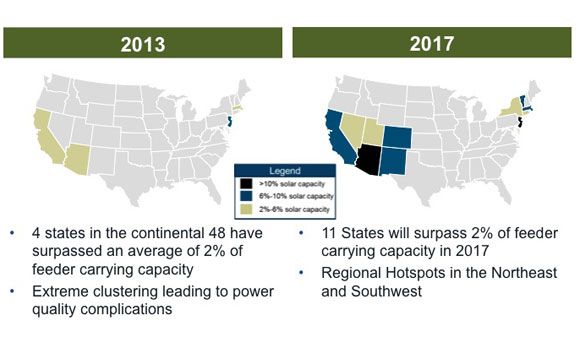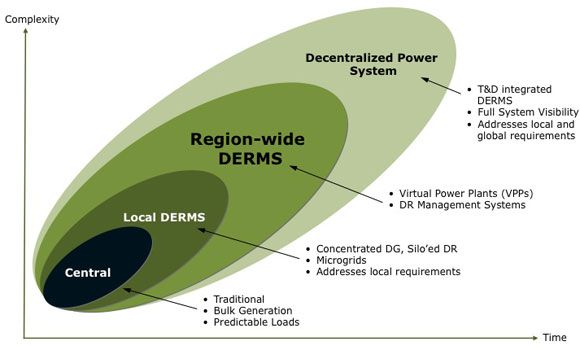Consolidated Edison is one of the distribution utilities that will be acutely affected if New York’s Reforming the Energy Vision, or REV, proposal becomes a reality in the coming years.
The utility is not necessarily fighting the changes happening at the grid edge. It already has a "utility of the future" group, explained Andrew Reid, a senior engineer at Consolidated Edison. However, Reid and his fellow engineers know that developing an entirely new system for operating the grid won't be simple.
“They call for plug-and-play distributed energy, but you need a distributed architecture for that,” said Reid, speaking at a Clean Energy Connections panel in New York City last week. That means utilities will need to make additional investments in the software and control systems to manage all that distributed energy.
At a recent Greentech Media webinar, Omar Saadeh, senior grid analyst with GTM Research, outlined the drivers for distributed energy resource management systems, commonly referred to as DERMS. “It’s essentially the controls system to give visibility into [the utility’s] distributed resources,” he said.
Currently, the growth of DERMS is coming from utilities looking to manage large demand-response-driven projects, said Saadeh. But the growth of distributed solar will change that in the next few years.

Graphic: GTM Research
Many utilities are starting with demand response DERMS projects to manage wind farms. Europe, in particular, has made significant headway and is ahead of the U.S. because of its higher penetration of renewable energy. France's first virtual power plant, installed in 2011, is designed to manage demand response loads to balance wind power.
As more solar and wind come on-line in certain regions of the U.S., intelligent storage and DERMS are expected to proliferate. Controls systems will become increasingly critical for distribution utilities trying to manage all of the assets on their systems, but it will also be critical for storage to scale. “You want to move from reactionary to predictive,” Con Ed’s Reid said of battery controls systems.

Graphic: GTM Research
Others on the panel agreed that the standardization of controls systems is important for storage adoption. “We need accurate, comprehensive battery characteristics,” said Ryan Wartena, founder of GELI. “I’m calling for a public database of battery characteristics. Until that happens, they won’t get financed.”
Ted Wiley, VP of product and corporate strategy at Aquion, agreed that the metrics to evaluate different battery technologies need to be developed on an “apples-to-apples basis. It needs to encompass the entire installed system, not just the batteries.”
Storage is becoming cost-competitive in California and New York, where demand charges are high and frequency regulation markets value storage. DERMS platforms will be increasingly important for utilities operating in these markets where solar and storage are coming together.
"Though these systems vary in complexity and even function," said Saadeh, "vendor opportunities lie in the ability to aggregate smaller customers, enable system-wide ancillary support, increase market participation and mitigate generation intermittency."
Watch the full panel discussion:
To learn more about DERMS from GTM’s Saadeh and hear from the CEOs of GELI and Aquion, join Greentech Media at Grid Edge Live in San Diego June 24-25.



